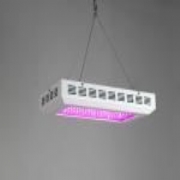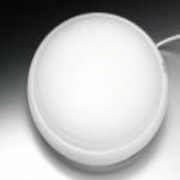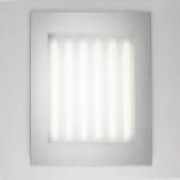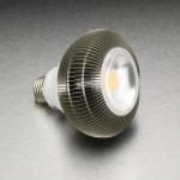specific wavelength band lighting
Plants need light for photosynthesis, which is the process that allows them to convert carbon dioxide into carbohydrates for energy and growth.Chlorophyll (the stuff that reacts to light) reacts to blue and red light. But it’s not just red and blue light – it is quite specific bands. Chlorophyll-A absorption exists at light wavelength 410nm-ish and a peak at 430nm (blue) and then another peak at 660nm (deep red). Chlorophyll-B has a peak absorption band at 453mn and another peak at 642nm.
Incandescent light sources produce full spectrum light. If these are used to provide light for photosynthesis, they emit, along with small quantities of these desirable wavelengths, plenty of all of the rest of the spectrum. This is waste energy and does not contribute to successful plant growth.
LED lights produce specific wavelength bands and these can be targeted at the application, so as to avoid wasting energy. In this case, using LEDs that only produce exactly the right wavelengths for photosynthesis optimizes plant growth and minimizes energy consumption.
Kudos supplies a range of LED grow lights, including a straightforward T8 replacement tube light:
Specification: T8 tube
Beam angle: 120 degrees
492 5mm leds per 48inch tube (other tube lengths possible, but this is
the standard product)
colour: red only, blue only, or red and blue
wavelength: red 650-660nm, blue 460-465nm
Visit the Kudos website for more information on specific wavelength band lighting






